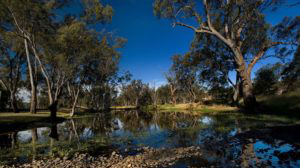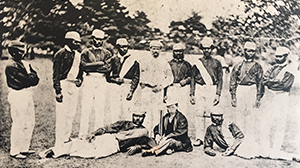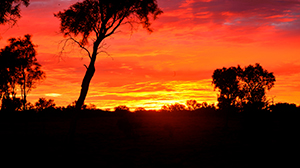The little town of Harrow – population just over 100 – is believed to be the oldest inland settlement in the state of Victoria, Australia.
It is located on the boundary of the West Wimmera and Southern Grampians local government areas, 391 kilometres north west of the state capital Melbourne and overlooking the Glenelg River valley.
The first European explorer of the area was Major Thomas Mitchell and a monument marks the spot where he crossed the Glenelg River. A town originally known as Upper Glenelg was established in the 1840s, later renamed Harrow and giving the town its claim as Victoria’s oldest.
The hotel, general store and several other buildings in the town had their foundations laid in the mid to late 40s and are still in use today.
The original Post Office opened on 1 March, 1849, as Upper Glenelg (Harrow from 1854). At its peak, the town included a range of shops and services including two hotels.
Lying on the border between optimum sheep production and cropping regions, Harrow enjoys the best of both worlds, with lamb, wool and grain harvests employing a large percentage of the area’s residents.
Proud Indigenous and Sporting Heritage
Before roads carved into the hills, billabongs and sandhills, caves and creeks mapped the country for the Wotjobaluk & Gunditjmara people. The first European to explore the country near Harrow was Major Thomas Mitchell, Surveyor General of the colony of New South Wales. With two boat wagons, three drays, a large bullock team and 31 men, Mitchell forded and renamed the Glenelg River on 31 July 1836. By the early 1860’s land in the district was occupied by settlers and Harrow rode on the sheep’s back, with the miracle fibre of wool drawing farmers to the lush pastures. Aboriginal men, employed on these settlements, were introduced to cricket through the pastoral families for whom they worked. It quickly became evident that their innate athletic abilities translated exceptionally well to the game, making them outstanding cricketers. Aboriginal prowess at cricket had developed and spread so quickly that by April 1864, the Harrow ‘correspondent’ for the Hamilton Spectator reported that “twelve aborigines belonging to this district have challenged the Edenhope club to play them on the 12th of this month.” Station owners that were most influential in the introduction of cricket on their stations were Charles Officer of Mt Talbot Station, David Edgar of Pine Hills, Arthur Cowell of Brippick, Charles Armytage of Fulham Station and David Affleck of Rose Banks, to name but a few.
In March 1866, under the management of William Hayman and captaincy of Thomas Hamilton, the team played against a Hamilton side on what is now Melville Oval. Later that year, they left the district under the captaincy of Melbourne-based coach and cricketer Tom Wills, playing their first game at the MCG on December 26th and 27th. This marked the beginning of greater achievements, though it was far from easy. No event in Aboriginal sporting history rivals the rapid rise to fame of the western Victorian Aboriginal cricketers—trailblazers who endured countless obstacles and challenges. It is a unique and proud history for the district, where the redgums and black box still line the rivers, where farmers still flourish on lush pastures and where we celebrate this amazing story in Australian sport.
A Dynamic and Active Community
In recent years, there has been a drift away from Harrow to larger towns in the region.
In an effort to counteract this, Harrow has pioneered several popular events such as the regular ‘Beaut Blokes’ events. The event was established to offset a perceived gender imbalance by introducing women from cities such as Melbourne and Geelong to single men from the district. The concept has now been picked up by other rural communities throughout Australia.
The Harrow By Night – Sound and Light Show is held monthly from September to March, retelling the history of Harrow in a humorous and interactive dinner and theatre performance.
One of Harrow’s greatest and most unique visitor events, is the Harrow National Bush Billycarts Championship and Johnny Mullagh Championship, held every long weekend in March
The town in conjunction with neighbouring township Balmoral has an Australian Rules football team competing in the Horsham & District Football League and there is an excellent winter/spring course at the Harrow Golf Club on Nhill-Harrow Road.




